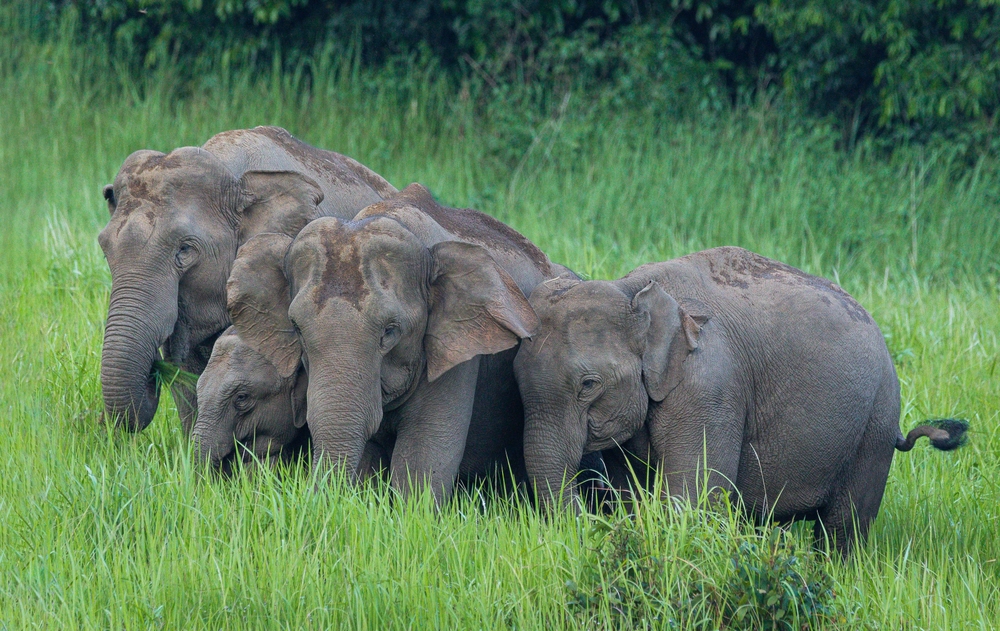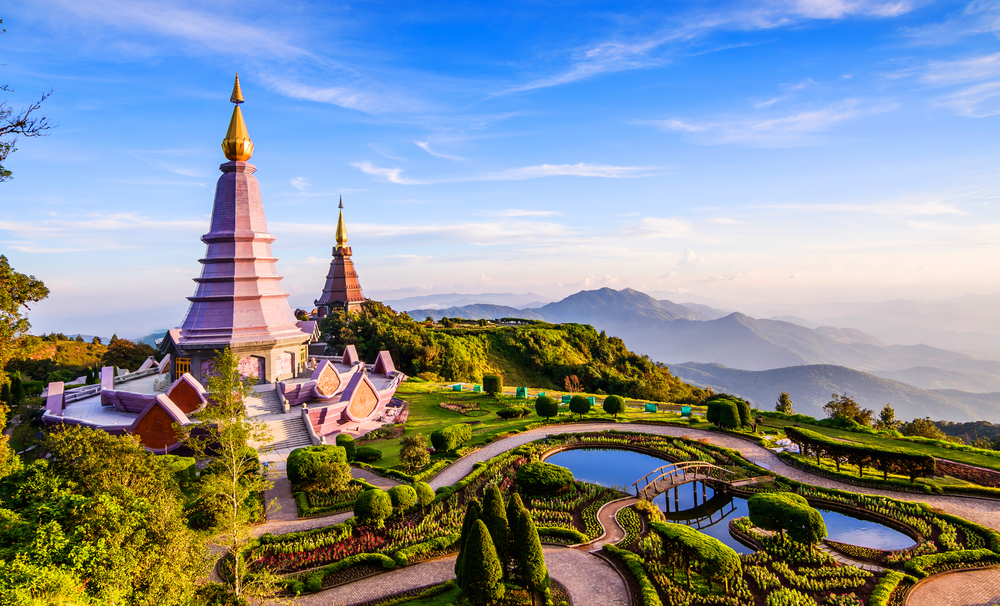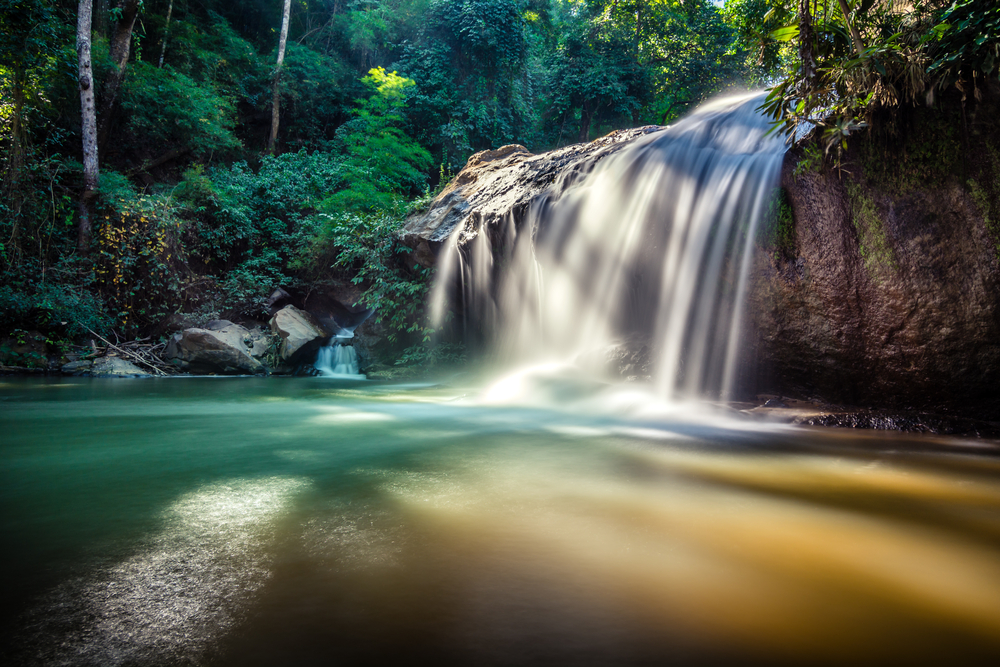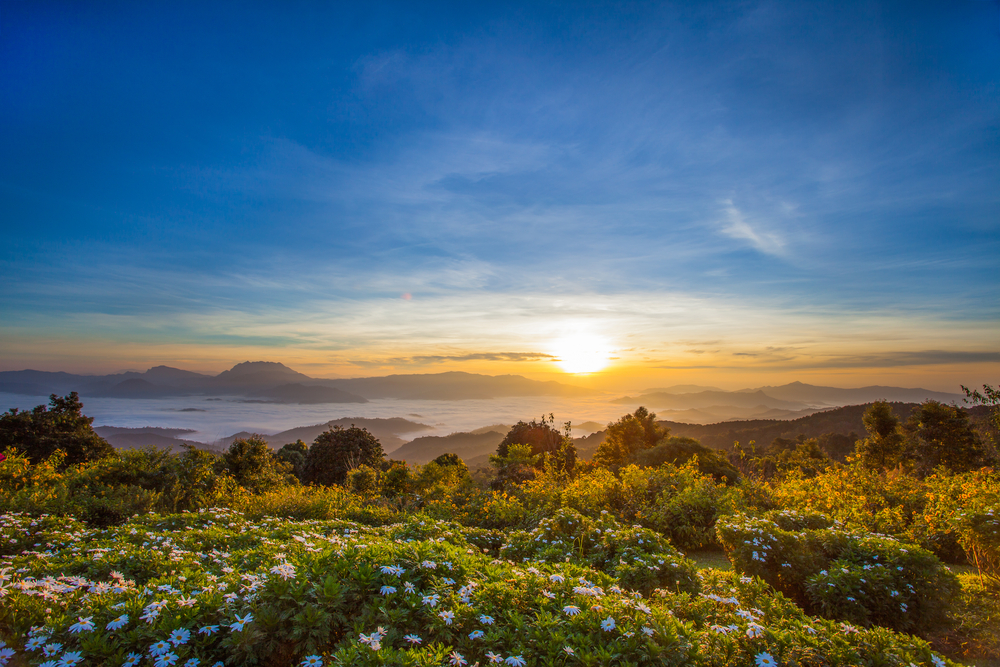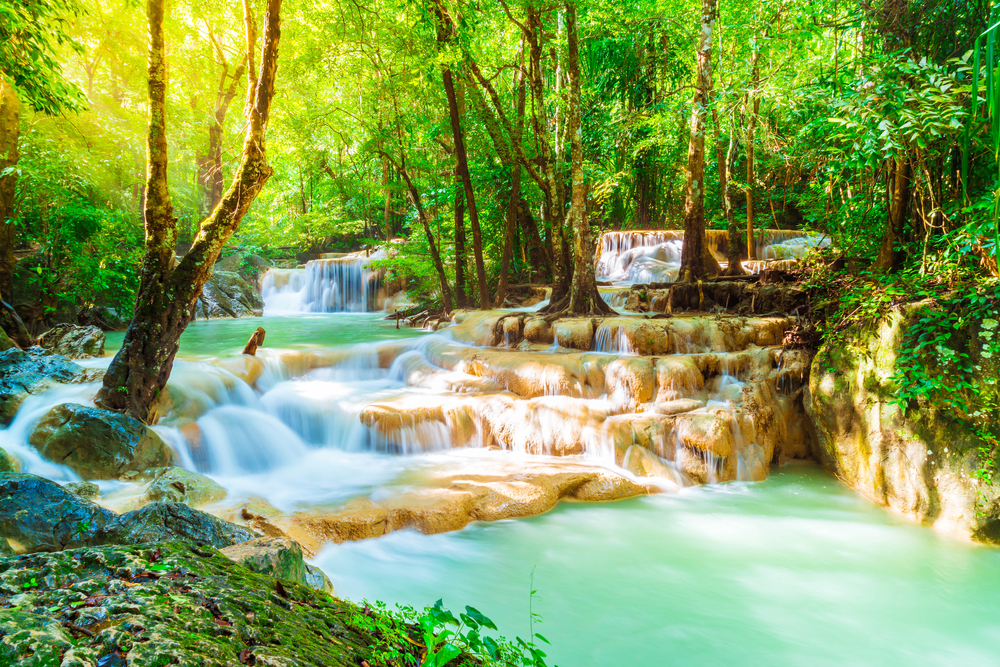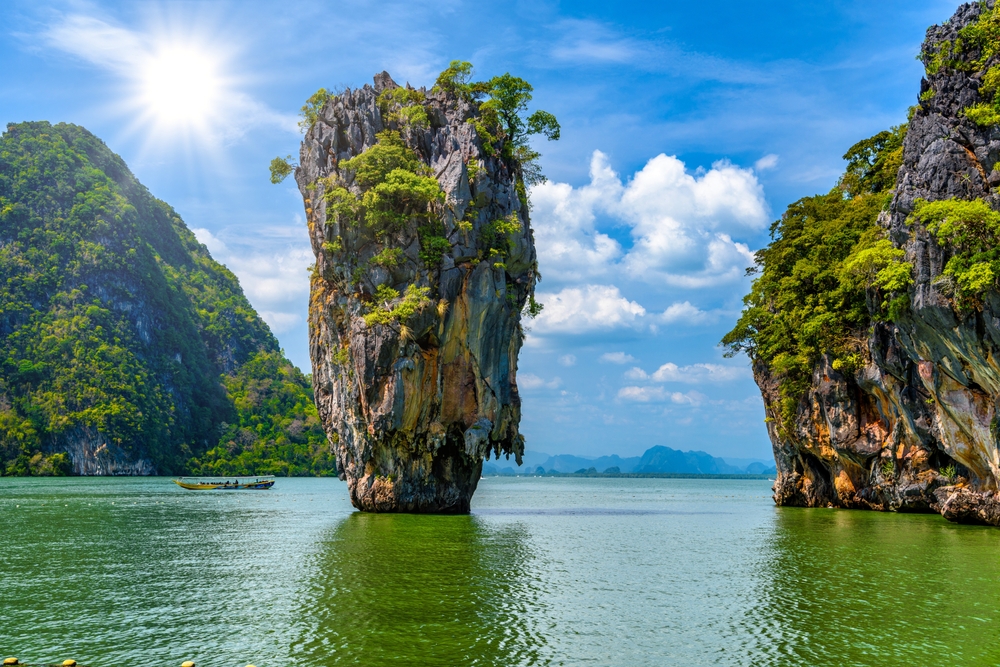Khao Yai Overview
Khao Yai National Park, known locally as อุทยานแห่งชาติเขาใหญ่ (Uthaiyan Haeng Chat Khao Yai), is one of Thailand’s most celebrated natural treasures. Spanning 837 square miles (2,168 square kilometers), the park is situated in central Thailand, covering parts of four provinces: Nakhon Ratchasima, Saraburi, Prachinburi, and Nakhon Nayok. As the country’s first national park, established in 1962, it forms a significant portion of the Dong Phayayen-Khao Yai Forest Complex, a UNESCO World Heritage Site.
The park’s landscape is a captivating mix of rolling hills, dense forests, grasslands, and rugged cliffs, all thriving between altitudes of 1,312 and 4,430 feet (400 to 1,350 meters). Its rich terrain includes prominent features such as Khao Rom, the highest peak at 4,432 feet (1,350 meters), and the mesmerizing Haew Suwat and Haew Narok waterfalls, which cascade down steep cliffs and create an ethereal atmosphere.
Seasonal rivers and streams meander through the park, supporting lush vegetation that varies from evergreen rainforests to dry deciduous forests, punctuated by grassy plains. Towering trees like the Hopea and Dipterocarpus species provide a vital canopy for the park’s diverse ecosystems.
Khao Yai is a sanctuary for an incredible variety of wildlife, making it a haven for nature enthusiasts. Visitors may spot large mammals like the Asian elephant, gaur, and sambar deer roaming through the park. Predators like leopards and the elusive clouded leopard add an element of mystery, while smaller mammals such as civets, porcupines, and macaques are commonly seen.
The park is also a birdwatcher’s paradise, home to over 300 bird species, including the great hornbill, scarlet minivet, and the white-rumped shama. The nocturnal fauna, including bats and slow lorises, offers a fascinating glimpse into the park’s vibrant night ecosystem.
Popular attractions include the aforementioned waterfalls, scenic viewpoints like Pha Diao Dai, and the Nong Phak Chi wildlife observation tower, which offers a chance to witness animals in their natural habitats. Guided night safaris and trekking routes of varying difficulty provide immersive experiences for adventurers, while designated camping areas allow visitors to stay close to nature. The park also features well-maintained roads for cycling and eco-friendly exploration.
Despite its beauty and biodiversity, Khao Yai faces challenges such as poaching, illegal logging, and human-wildlife conflicts. However, concerted conservation efforts, including stricter park regulations, community engagement programs, and wildlife monitoring initiatives, have yielded significant successes in protecting the park’s ecological integrity. Sustainable tourism practices continue to be a focus, ensuring that the park remains a thriving natural haven for generations to come.








































































